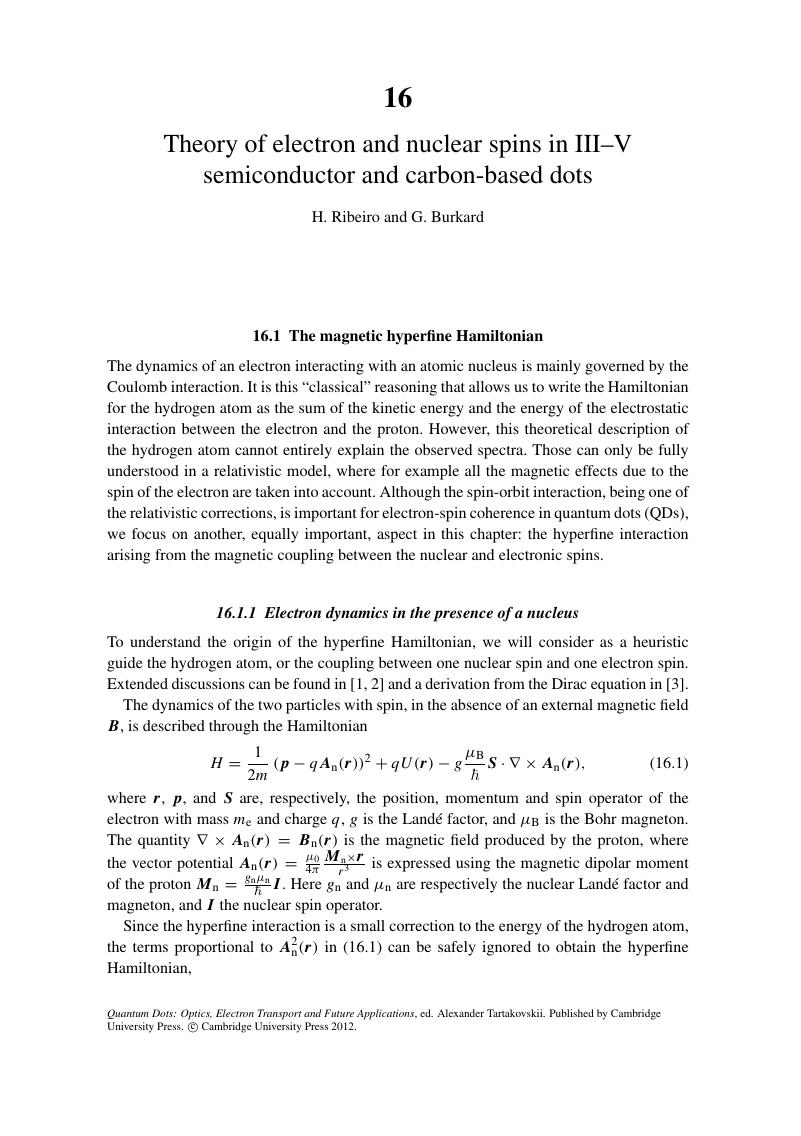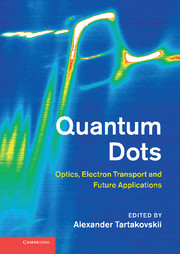Book contents
- Frontmatter
- Contents
- List of contributors
- Preface
- Part I Nanostructure design and structural properties of epitaxially grown quantum dots and nanowires
- Part II Manipulation of individual quantum states in quantum dots using optical techniques
- Part III Optical properties of quantum dots in photonic cavities and plasmon-coupled dots
- Part IV Quantum dot nano-laboratory: magnetic ions and nuclear spins in a dot
- Part V Electron transport in quantum dots fabricated by lithographic techniques from III–V semiconductors and graphene
- 15 Electrically controlling single spin coherence in semiconductor nanostructures
- 16 Theory of electron and nuclear spins in III–V semiconductor and carbon-based dots
- 17 Graphene quantum dots: transport experiments and local imaging
- Part VI Single dots for future telecommunications applications
- Index
- References
16 - Theory of electron and nuclear spins in III–V semiconductor and carbon-based dots
from Part V - Electron transport in quantum dots fabricated by lithographic techniques from III–V semiconductors and graphene
Published online by Cambridge University Press: 05 August 2012
- Frontmatter
- Contents
- List of contributors
- Preface
- Part I Nanostructure design and structural properties of epitaxially grown quantum dots and nanowires
- Part II Manipulation of individual quantum states in quantum dots using optical techniques
- Part III Optical properties of quantum dots in photonic cavities and plasmon-coupled dots
- Part IV Quantum dot nano-laboratory: magnetic ions and nuclear spins in a dot
- Part V Electron transport in quantum dots fabricated by lithographic techniques from III–V semiconductors and graphene
- 15 Electrically controlling single spin coherence in semiconductor nanostructures
- 16 Theory of electron and nuclear spins in III–V semiconductor and carbon-based dots
- 17 Graphene quantum dots: transport experiments and local imaging
- Part VI Single dots for future telecommunications applications
- Index
- References
Summary

- Type
- Chapter
- Information
- Quantum DotsOptics, Electron Transport and Future Applications, pp. 277 - 295Publisher: Cambridge University PressPrint publication year: 2012



